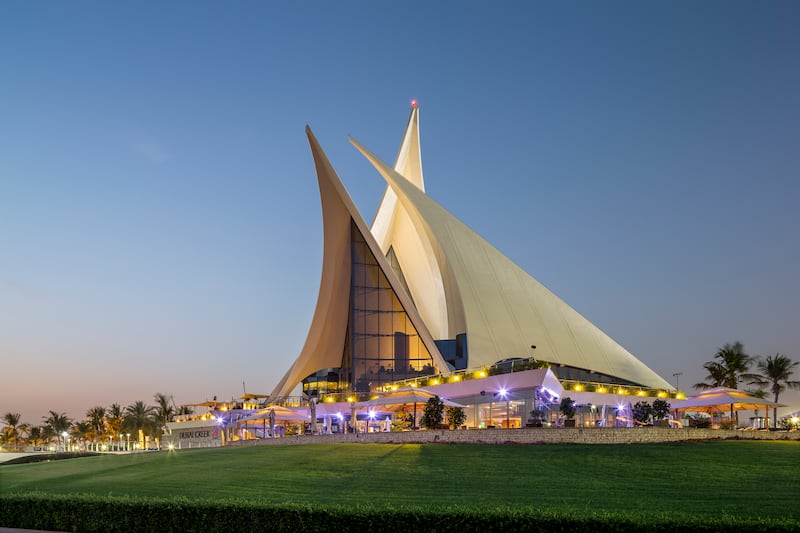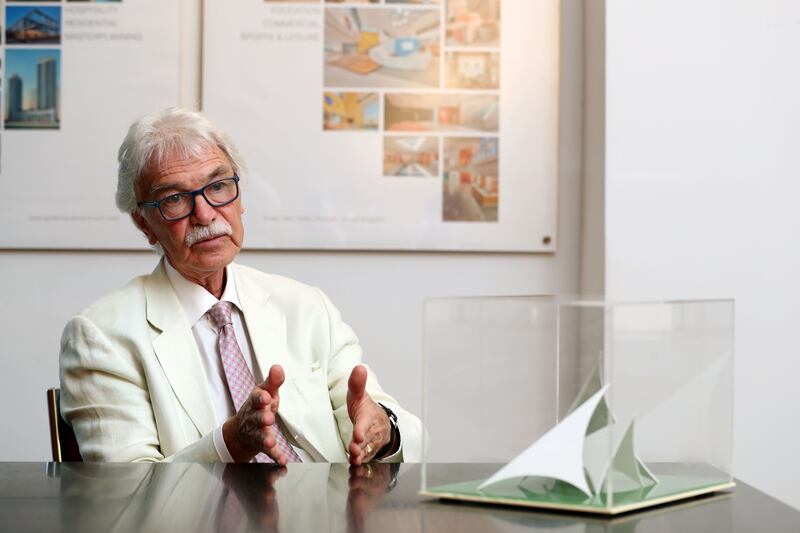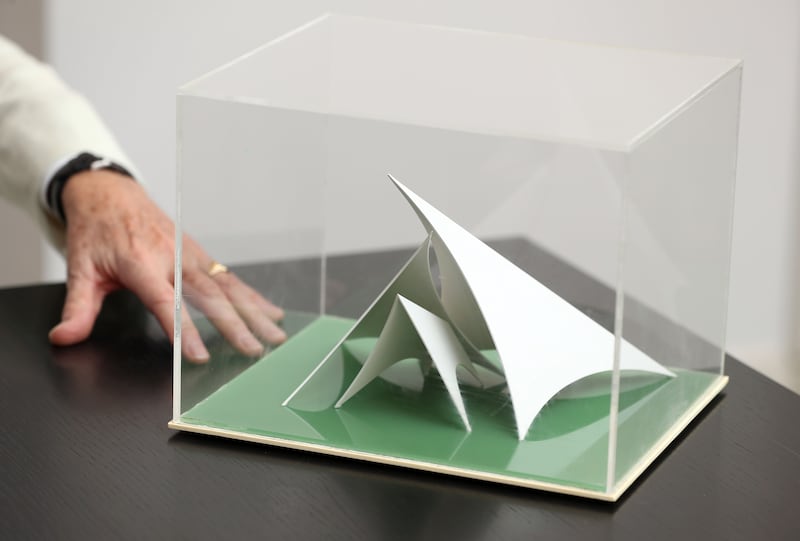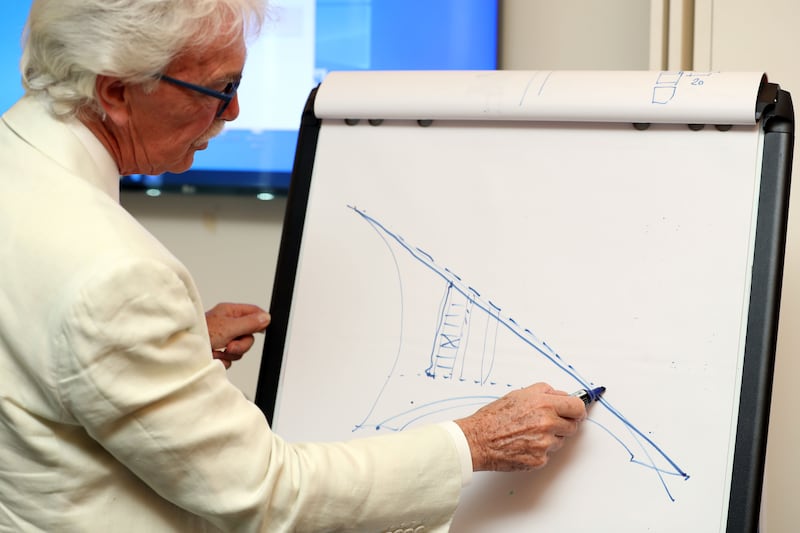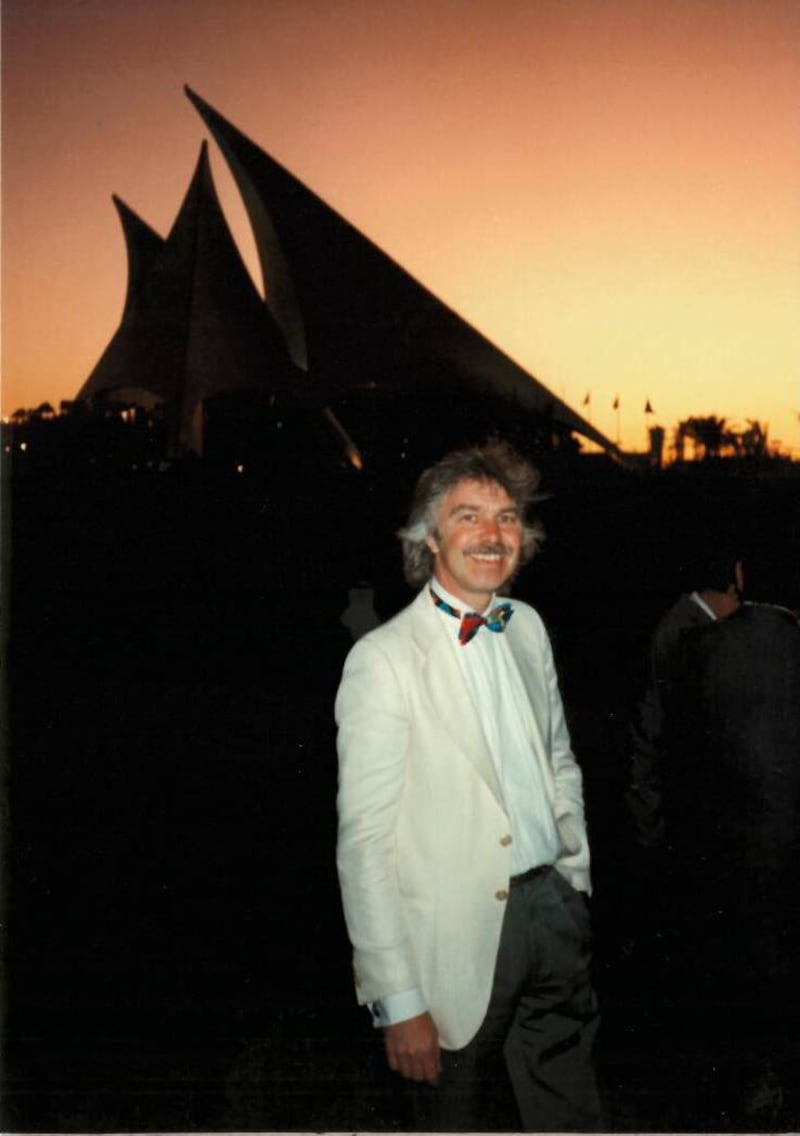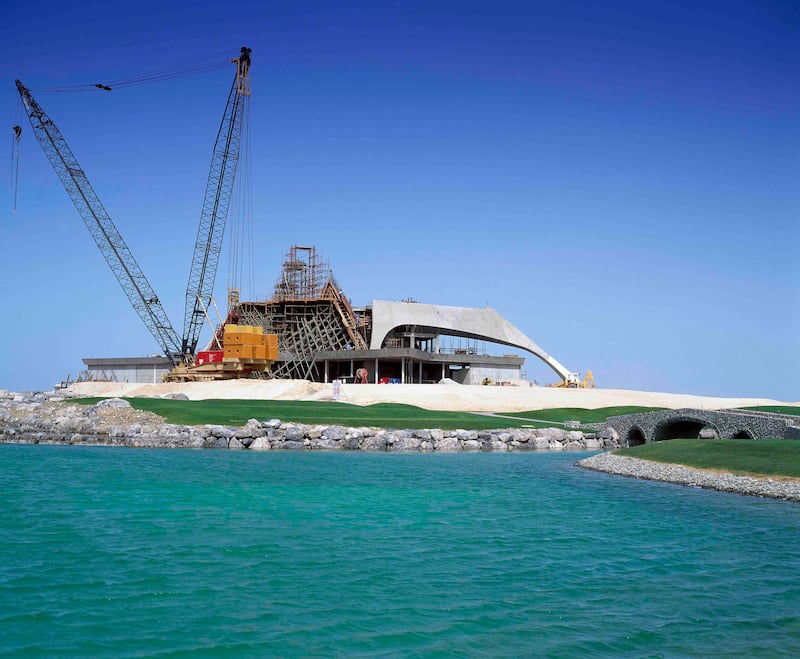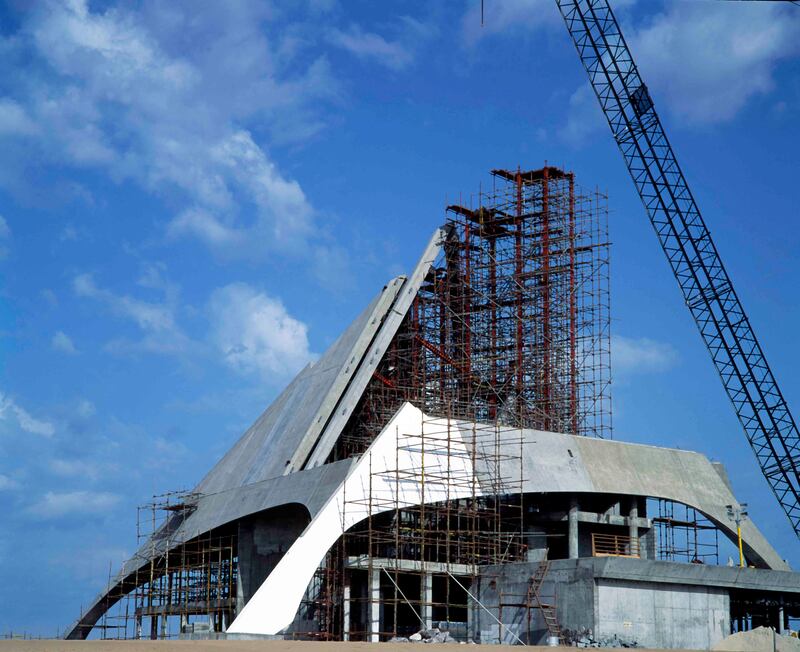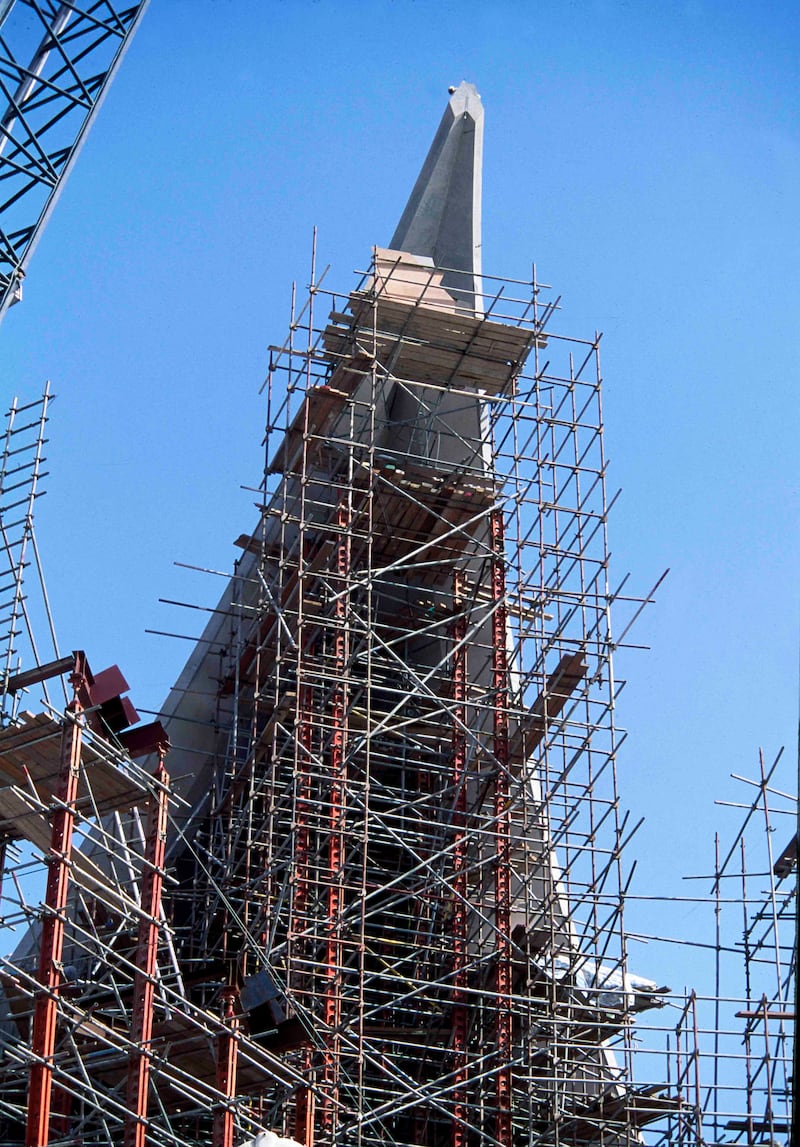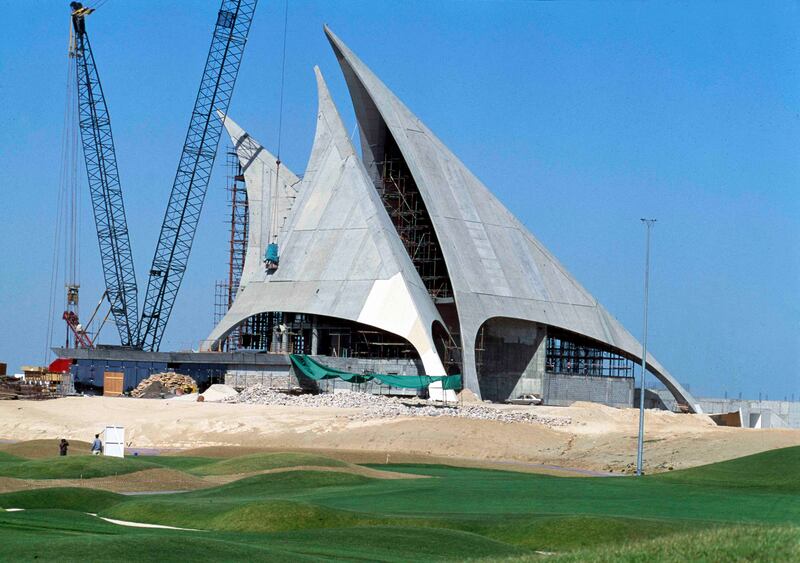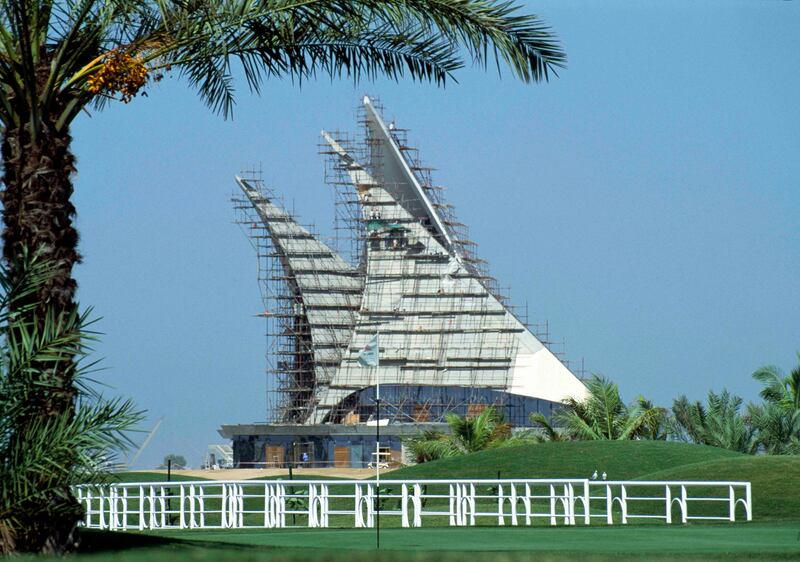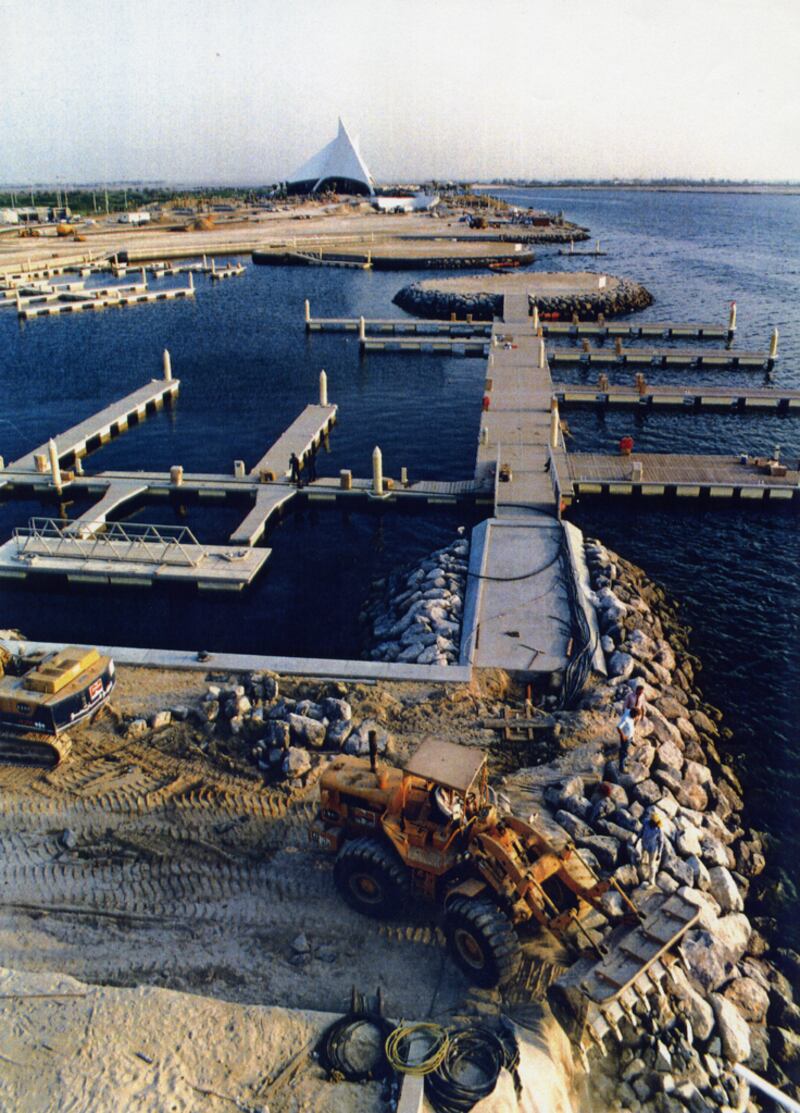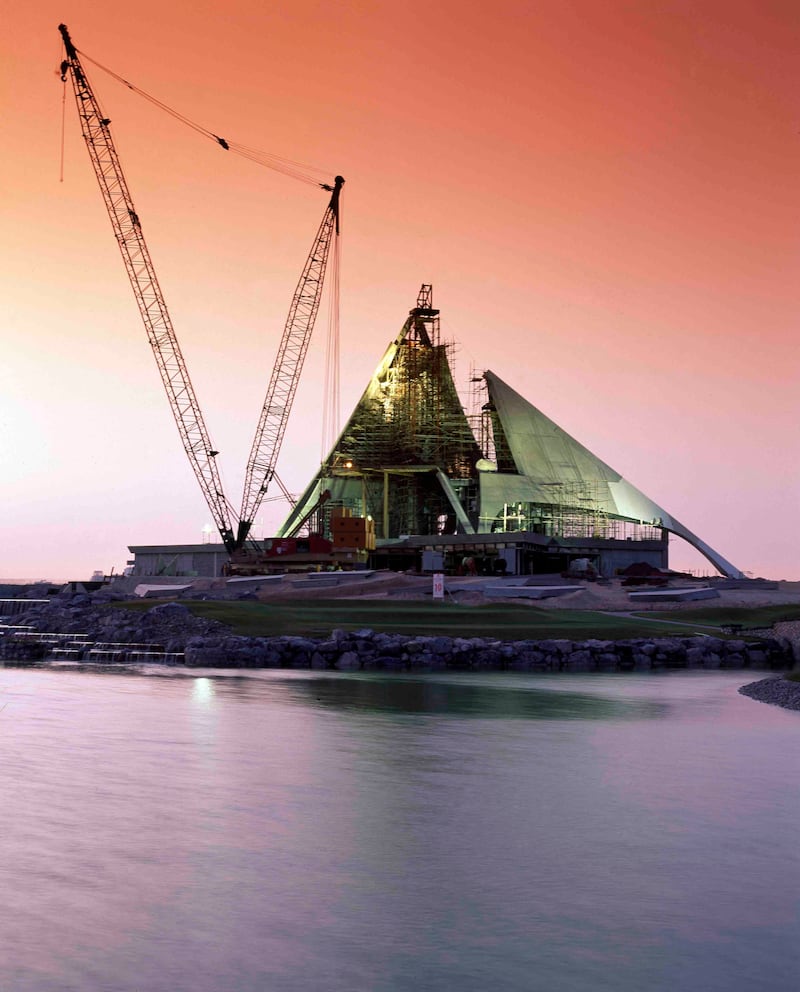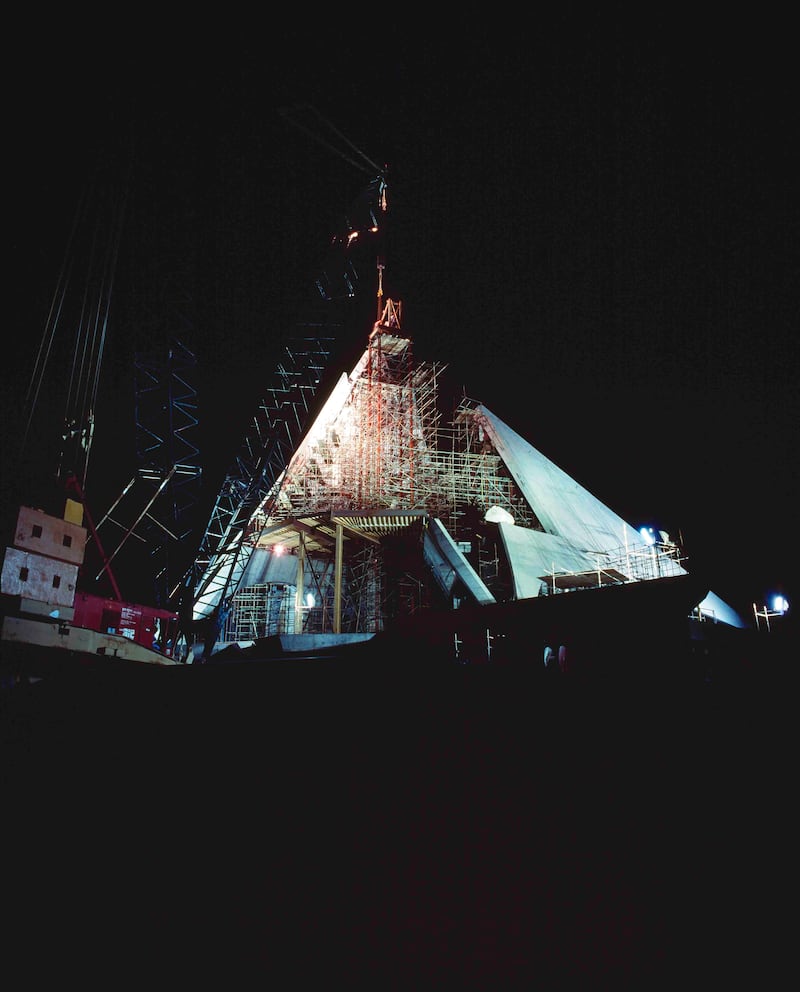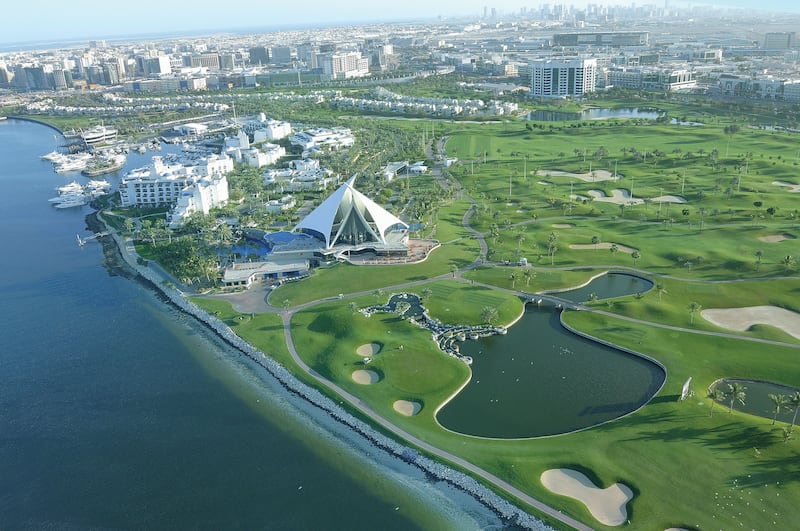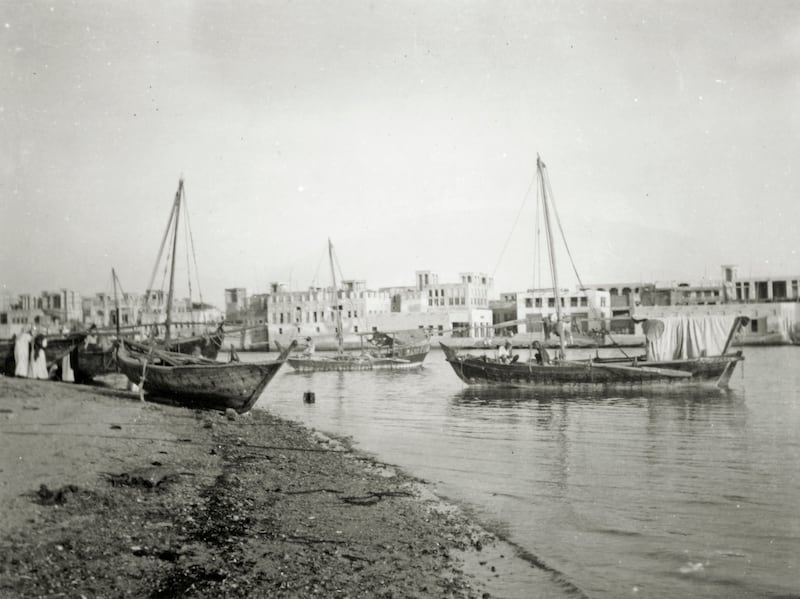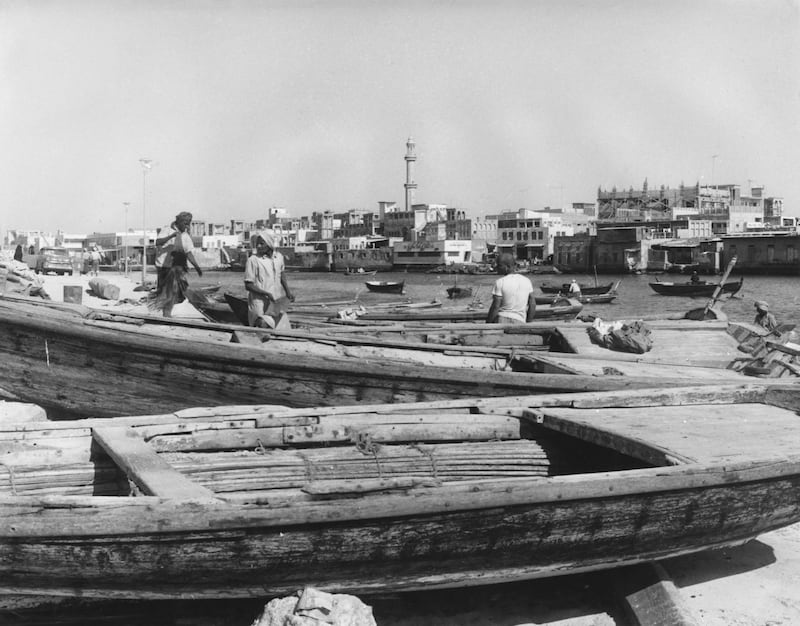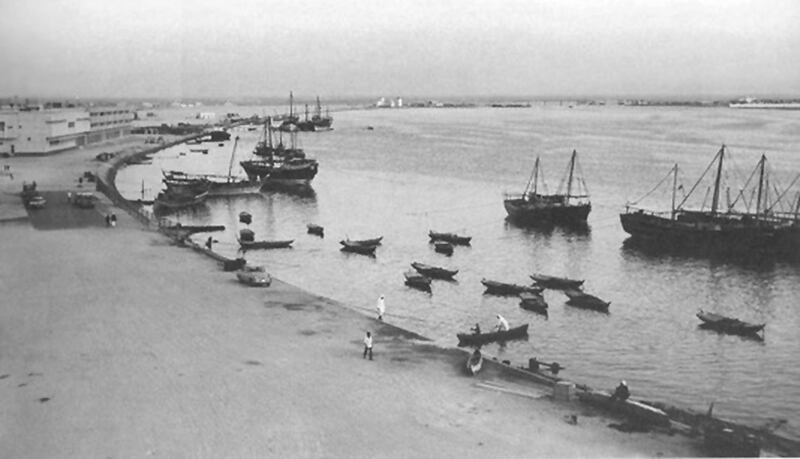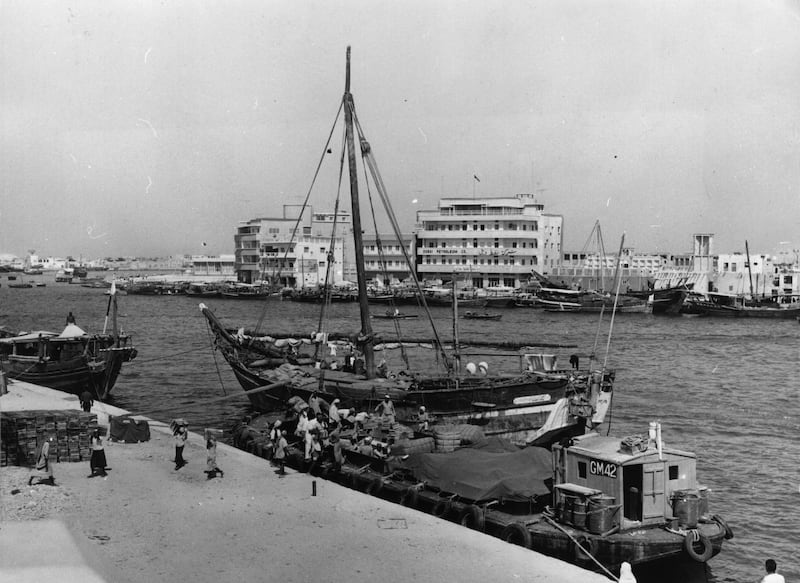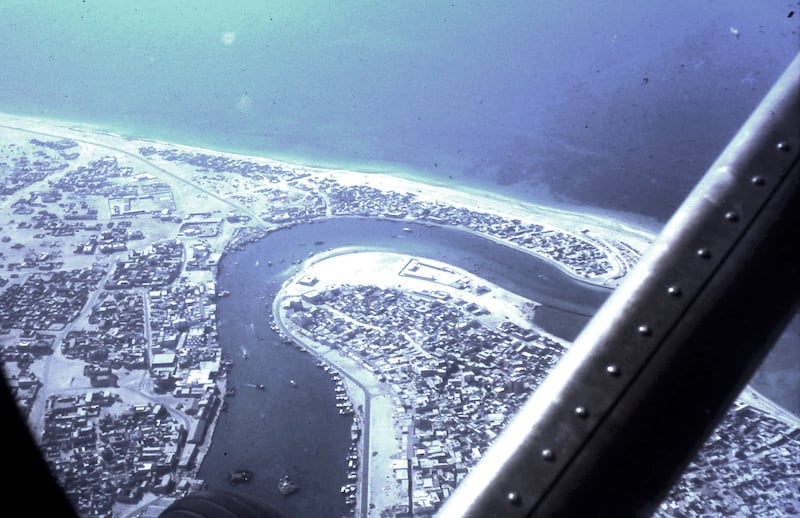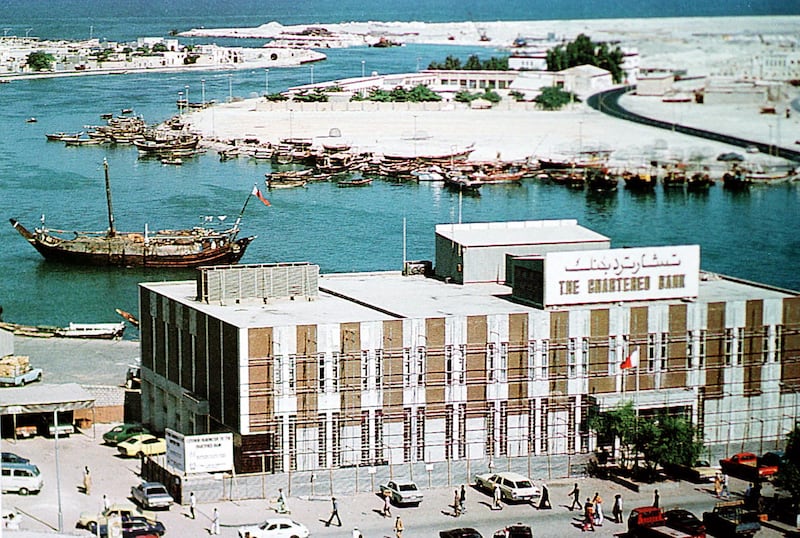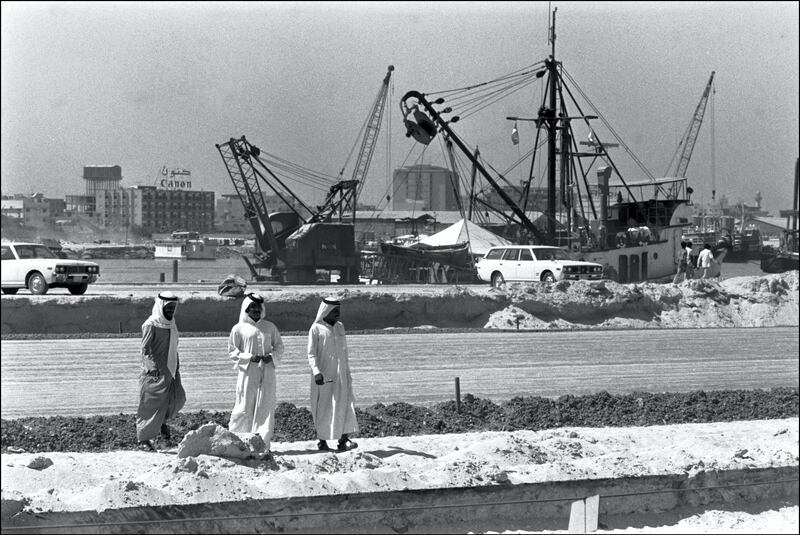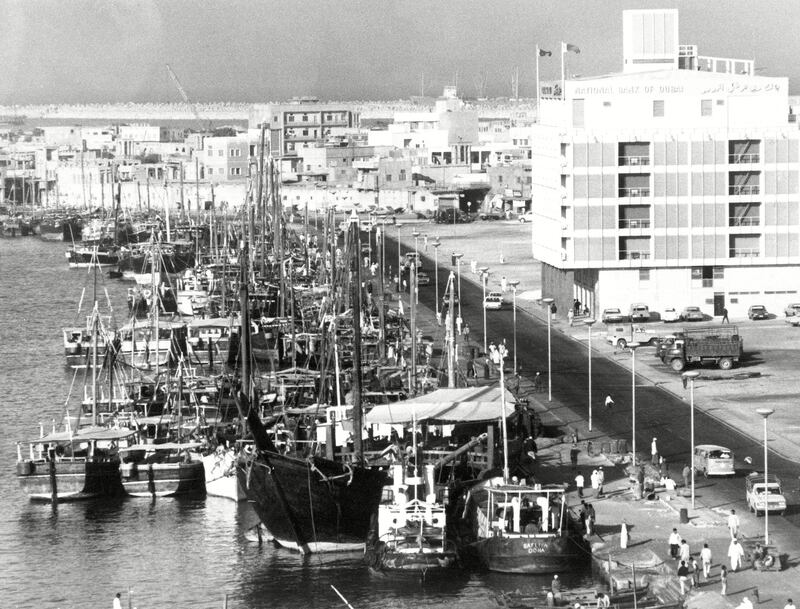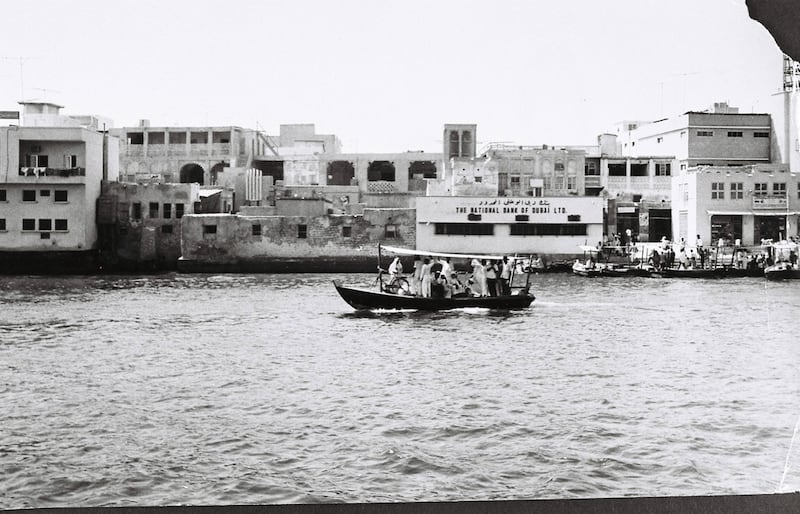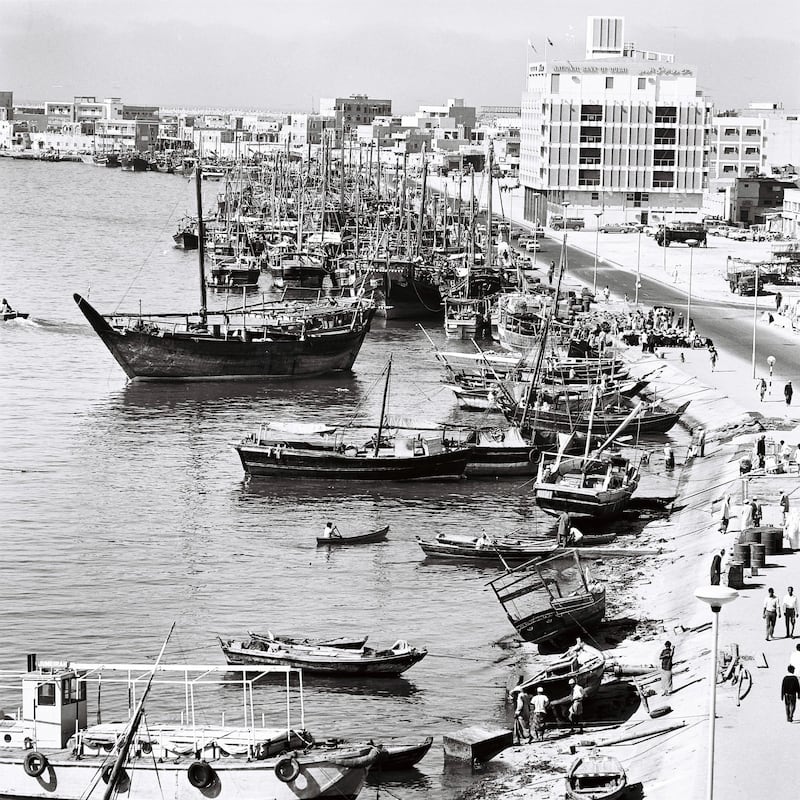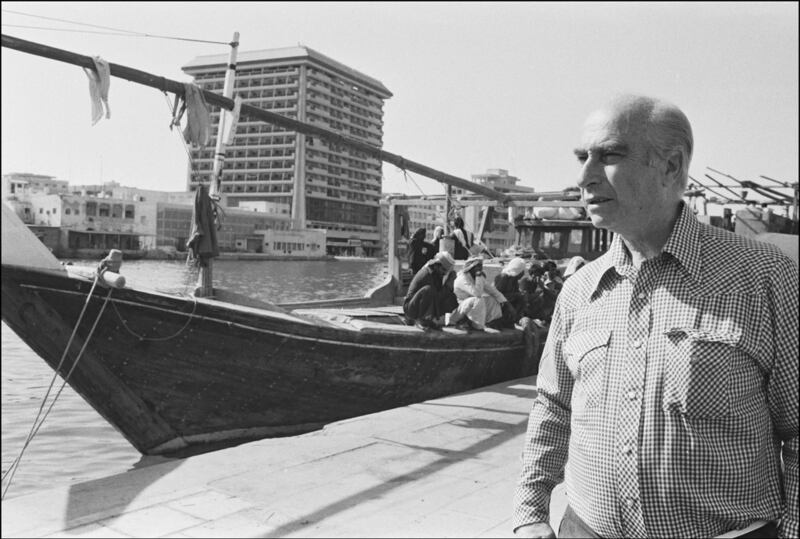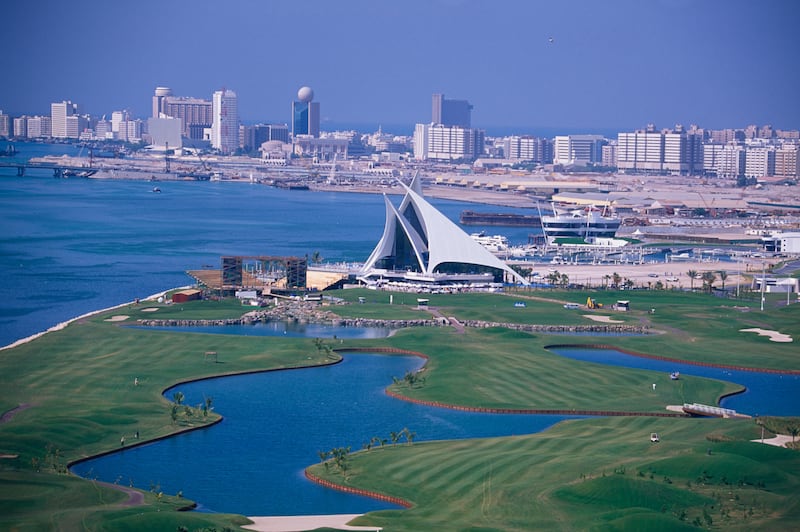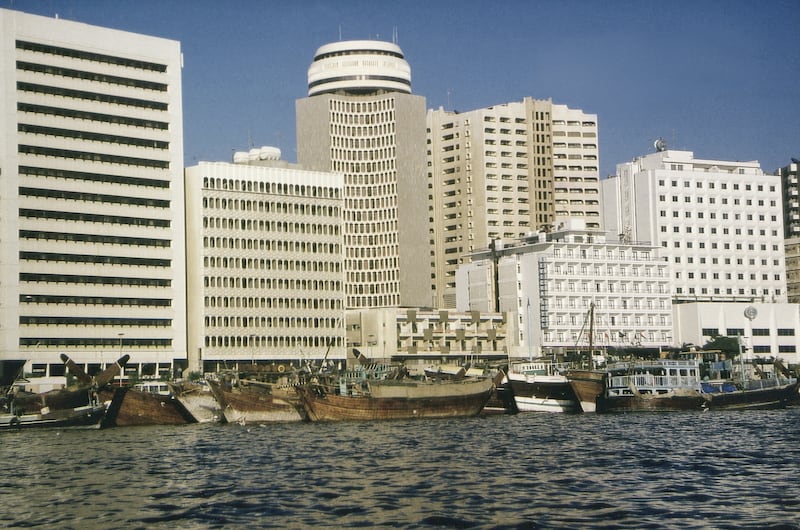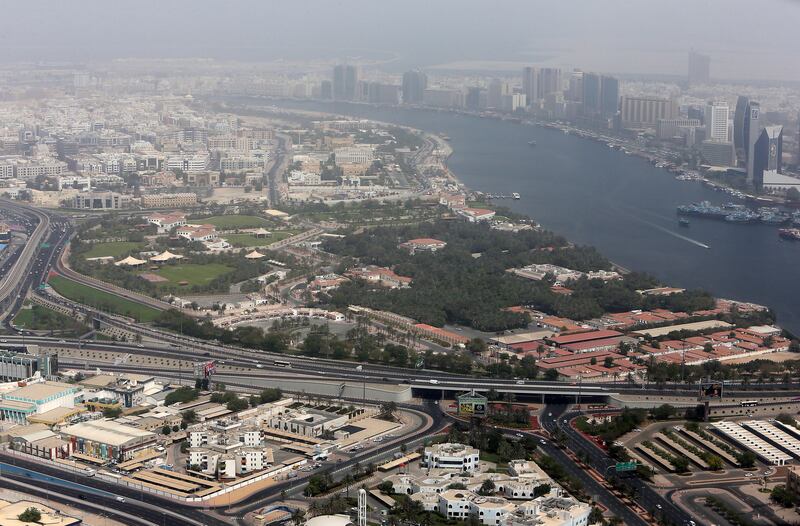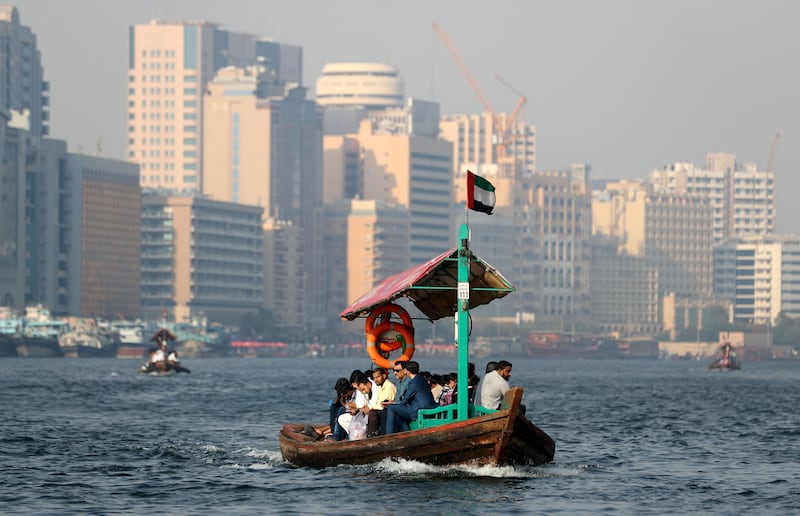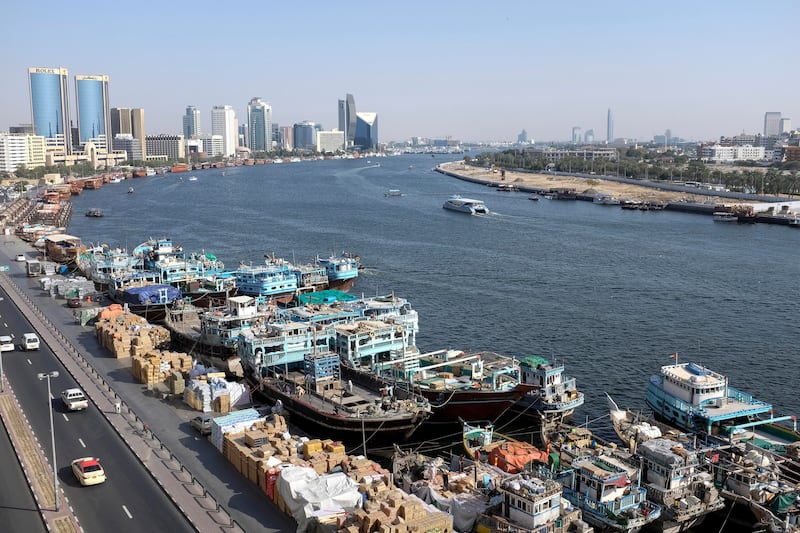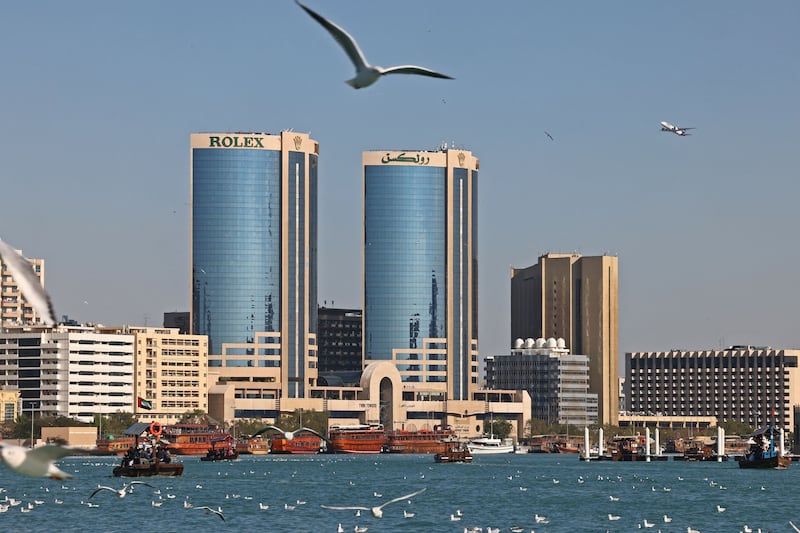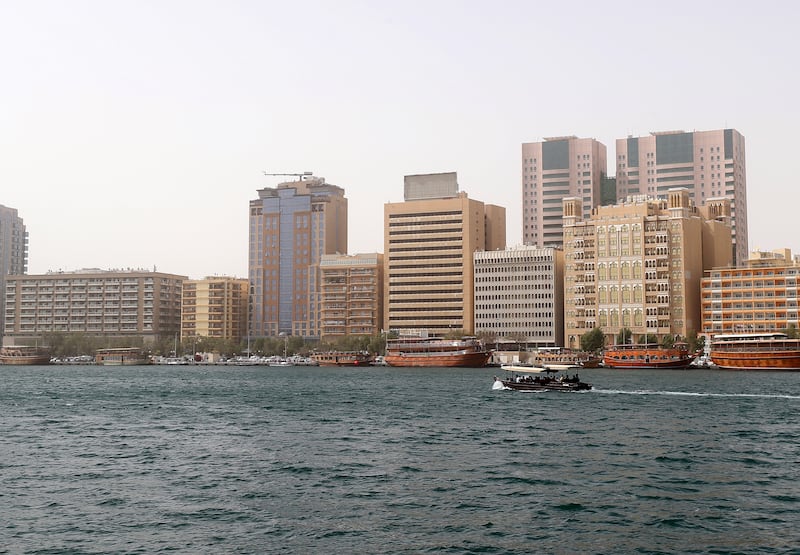They are among the buildings that define the UAE. But what is the story behind them? In the first part of our summer series celebrating the country’s architecture, we speak to Brian Johnson, the man behind the clubhouse of the Dubai Creek Golf and Yacht Club.
It was a split-second decision that arguably changed Dubai’s skyline and Brian Johnson’s life.
The sketches for a new building on the shores of the Creek were being sent by courier from the UK in a sealed package.
But the British architect quickly had a small, eight-inch model made and sent it with the drawings.
“It was a last-minute decision but it was the best £100 I ever spent,” says Mr Johnson with a smile, pointing to the model that is now sitting in his office in Dubai.
“We needed something to explain [the design] and I wasn’t going to be there.”
Almost 30 years on, his clubhouse for Dubai Creek Golf and Yacht club remains one of the city’s well-known buildings.
Mr Johnson’s angular design, which evokes the lateen sails of a dhow, became an instant classic and has stood the test of time.
Even the advent of Burj Khalifa, the world’s tallest building, has not dislodged the importance of the structure on Dubai’s ever-changing skyline. It also graces the back of the Dh20 note.
Historic heart of Dubai
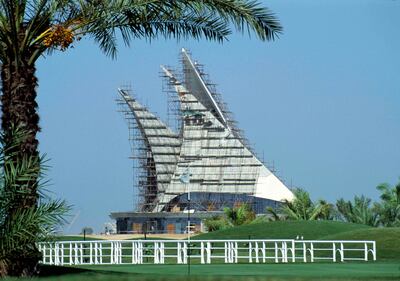
Sitting in his Dubai offices today, Mr Johnson recounts the painstaking design effort in the late 1980s for the bid that beat international competitors from across the globe.
But his winning design was no accident. Instead, it was the culmination of years of work by Mr Johnson in the UAE, experimenting with regional motifs and symbols.
He arrived in Dubai in the mid-1970s to work on Sharjah’s Marbella Resort. Opened by Scottish actor Sean Connery in 1978, the resort was a collection of Spanish colonial-style adobe cottages set in a lush garden.
From there, Mr Johnson turned to designing Jumeirah English Speaking School, which had an open plan, hardly any corridors and a pitched roof that allowed in natural light from above.
“This was the beginning of my tendency to try to give buildings a sense of where they came from,” he says.
More schools followed along with a significant amount of work for Dubai Police. With Brewer, Smith and Brewer, Mr Johnson was also behind the famous Bedouin tent design of Emirates Golf Club, which opened in 1988.
“[Sheikh Mohammed bin Rashid, now Vice President and Ruler of Dubai] said this is a desert but I want it to be a Dubai desert building.
"We went away and came up with 101 variations on tents. The one that struck was the one that was most symbolic of a tent without actually looking like it.”
The designs of Emirates Golf Club and JESS were hints of what were to come. By the late 1980s, Mr Johnson was back in the UK and working with his own practice, Godwin Austen Johnson.
But Dubai would come calling again. Much of the development through the 1980s had been on Sheikh Zayed Road, extending the city towards Abu Dhabi. But now the attention switched back to the historic heart of Dubai, the Creek. A new golf course was being planned with a clubhouse to introduce Dubai as a global centre of golf. This could be no mere course for players, however.
Sail-inspired design
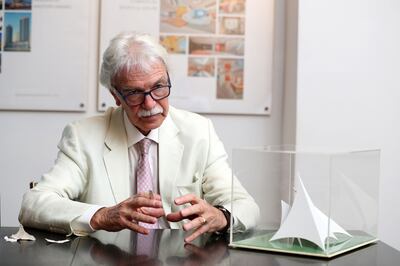
Mr Johnson worked on the designs from offices in the British Midlands but kept thinking about the Creek. It was here that he lived when he arrived in Dubai for the first time in the 1970s.
Just a few decades earlier, the great pearling fleets could still be seen in Dubai waters. Even in the 1970s, boats crowded the Creek, carrying cargoes across the Gulf and the city’s life revolved around it. The idea of a lateen sail then kindled an interest in him.
“I clearly needed a different image to Emirates Golf Club. What does the Creek tell you?” he asks. “It tells you about water and boats and dhows.
“Having had that conversation with [Sheikh Mohammed] about how it had to be like Dubai, then I think we had that head start.”
Then came the hard work — weeks of drawing, sketching and filling bins with countless designs that failed to make the cut. Some of the early perspectives faintly resembled the Sydney Opera House.
“Sydney Opera House is completely curved," Mr Johnson says. "So avoiding that was the key to making this different. Everything at Dubai Creek is flat.”
Taking a business card from his pocket, he folds it to show how the three-dimensional effect was achieved.
“You make it to a square, fold it in half with a little bit of this and little bit of that and suddenly you have it,” he says with a smile. “One must play with forms and shapes.”
He also ensured that no matter where anyone stands on the course, the design looks like the sails of a dhow. This was done by adding sails of different sizes.
Construction started in 1990 by Al Naboodah Laing and it was a complicated process. The concrete panels that make up the sails had to be aligned precisely to ensure the building was free of any curves.
“It had to be absolutely spot on,” says Mr Johnson. “But it was really high-tech and cutting edge in its day.”
Spectacular opening
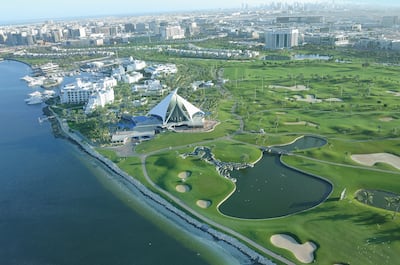
Dubai Creek Golf and Yacht Club opened in spectacular fashion on January 28, 1993. Sheikh Mohammed cut the ribbon, Shirley Bassey played and thousands of people watched a fireworks display light up the Creek in one of the biggest parties the city had ever seen.
Photographs of Mr Johnson at the ceremony show him elated at a job well done. Along the way, it has hosted other performances by Stevie Wonder, Rod Stewart, Roger Waters and Elton John.
The golf course, designed by architect Karl Litten, was overhauled in the mid-2000s. Today, the clubhouse remains one of the most distinctive buildings in Dubai and helped introduce the city to the world.
“When you have the Eiffel Tower in the background, everyone immediately knows you are in Paris. So it is a symbol of Dubai,” says Mr Johnson.
“It is not a cheap way to build a golf clubhouse but they certainly didn’t want an invisible golf clubhouse. So it was important to me to respond to that.”
The opening was also important in the context of its time. Although the idea for the course developed in the 1980s, the Gulf War of 1990 cast a shadow over the region, with many people leaving and economic uncertainties lingering.
But many also stayed, and the Dubai Creek opening showed that people who had written off Dubai would be wrong once more.
Now in his 70s and based again in Dubai, Mr Johnson's 45-year career also includes Al Seef heritage district and the Bab Al Shams hotel but there is only one Dubai Creek.
"The Creek has a special place in my heart. It is in a fabulous location, a fabulously visible location and nobody who comes into Dubai by air and goes over the bridge doesn’t see it and wonder what the hell it is.
“It was a fantastic opportunity to do something a bit different and we pulled it off. Dubai made it possible.”
A version of this article was first published on July 17, 2022
